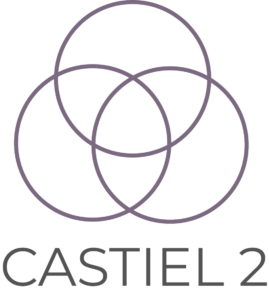PhysiCell—physics-based multicellular simulator—is an open source agent-based simulator that provides both the stage and the players for studying many interacting cells in dynamic tissue microenvironments. It builds upon a multi-substrate biotransport solver to link cell phenotype to multiple diffusing substrates and signaling factors. It includes biologically-driven sub-models for cell cycling, apoptosis, necrosis, solid and fluid volume changes, mechanics, and motility “out of the box.” The C++ code has minimal dependencies, making it simple to maintain and deploy across platforms. PhysiCell has been parallelized with OpenMP, and its performance scales linearly with the number of cells.
CoE: PerMedCoe
CellNOpt (from CellNetOptimizer; a.k.a. CNO) is a software used for creating logic-based models of signal transduction networks using different logic formalisms (Boolean, Fuzzy, or differential equations). CellNOpt uses information on signaling pathways encoded as a Prior Knowledge Network, and trains it against high-throughput biochemical data to create cell-specific models.
CellNOpt is freely available under GPL license in R and Matlab languages. It can be also accessed through a python wrapper, and a Cytoscape plugin called CytoCopter provides a graphical user interface.
CoE: PerMedCoe
COBRA (Constraint-Based Reconstruction and Analysis) is currently the only methodology that permits integrated modeling of Metabolism and macromolecular Expression (ME) at genome-scale. Linear optimization computes steady-state flux solutions to ME models, but flux values are spread over many orders of magnitude. Data values also have greatly varying magnitudes. Standard double-precision solvers may return inaccurate solutions or report that no solution exists. Exact simplex solvers based on rational arithmetic require a near-optimal warm start to be practical on large problems (current ME models have 70,000 constraints and variables and will grow larger).
CoE: PerMedCoe
Palabos is Lattice Boltzmann Method (LBM) solver, available as open source, and massively parallel. The team of Prof Bastien Chopard at University of Geneva (CH) has specialised it to solve a number of relevant biomedical problems, including simulation of blood flow, and bone cement penetration during vertebroplasty. The software has specific features to deal with biomedical problems, reading medical images. Palabos was tested on CADMOS BlueGene/Q (Switzerland), UniGe Baobab (Switzerland).
Palabos – Vertebroplasty Simulator: This solution, currently in its final stage of development, uses Palabos to provide a vertical solution for the pre-operative planning of vertebroplasty. Micro CT images of the damaged vertebral body are converted into an LBM model, which simulates multiple cement injections with different access point and cement volume. The simulation results predict exact filling patterns of the injected cement. Plans of future developments include converting the results into a finite element model, which will predict the increase in biomechanical strength with respect to the untreated vertebra.
Palabos – Flow Diverter Simulator: This solution, currently in its final stage of development, uses Palabos to provide a vertical solution for the pre-operative planning for the insertion of flow diverters. CT scan images of blood vessels with aneurysms or other anomalies are converted into an LBM model. Different types of flow diverters are numerically inserted to test their impact on the blood flow pattern. Simulation output includes wall shear stress distribution in the aneurysm to predict the rate of blood clotting.
CoE: ComBioMed
Insigneo Bone Tissue Suit (IBTS) This is a collection of modelling tools developed by the teams of Prof Marco Viceconti, Dr Shannon Li, and Dr Enrico Dall’Ara, at the Insigneo Institute at the university of Sheffield (UK), with the collaboration of Dr Francesc Levrero Florencio (Oxford), Prof Pankaj Pankaj (Edinburgh) and Prof Lee Margetts (Manchester). Starting from microCT or NanoCT datasets of bone tissue, the suit provides tools for: – MicroMesh: Automatic generation of Cartesian 8-node hexahedral finite element meshes from microCT data, using both homogenous, or density-based heterogeneous material mapping; – MicroFE: large-scale micro finite element solver, based on the ParaFEM library for large displacement, large strain, simulations of bone tissue micromechanics; – BoneDVC: Digital Volume Correlation code that computes the displacement field induced in bone tissue specimens subjected to staged compression. The Insigneo Bone Tissue Suit will enable a complete modelling and validation cycle on very largescale datasets generated with Sn-microCT with resolutions of up to 4000^3 voxels. The code is installed, optimised, and is accessible to any user with a valid account and CPU-time on the ShARC and Archer HPC systems.
CoE: ComBioMed
Computer Tomography to Strength (CT2S) is an on-line service developed by the team of Prof Marco Viceconti at the Insigneo Institute at the University of Sheffield (UK), which allows the prediction of the biomechanical strength of a patient’s bone from a clinical CT scan of that bone. The service operates by creating a patient-specific finite element model of the bone, using a state of the art image-processing pipeline. This very precise model of the patient’s anatomy is then examined under a range of highly realistic simulated loading conditions, including walking, running, stair-climbing and falling, and the fracture load is computed in each case. Data summarising the identified fracture strength is returned to the user. The solution is currently exposed as a service, accessible through a web interface; the backend HPC system currently in use is USFD’s own ShARC. The service is currently provided at cost, with a significant discount for non-sponsored clinical studies. USFD is currently exploring the best marketing strategy.
CoE: ComBioMed
The High throughput binding affinity calculator (HTBAC) is a scalable solution for adaptive personalised drug discovery. HTBAC it uses high level python object abstractions for defining simulations, physical systems and ensemble-based free energy protocols. The Runner class as part of the HTBAC abstraction uses underlying building blocks middleware developed by the RADICAL team to create and execute multiple concurrent executions of protocols on supercomputing cyberinfrastructures while abstracting and handling execution management, and data transfer.
CoE: ComBioMed
Visual GEC is a software tool for designing engineered cells and simulating biochemical interactions. The Genetic Engineering of Cells (GEC) software, developed by the Biological Computation team at Microsoft Research (Cambridge, UK), is a modelling tool that can be used to design and simulate synthetic genetic circuits. At the core is a domain-specific programming language for biochemical systems (LBS), originally developed at the University of Edinburgh. The tool supports stochastic and deterministic simulation of the temporal dynamics of chemical reaction networks, but also spatio-temporal dynamics via reaction-diffusion equations. Parameter inference can also be performed using Metropolis-Hastings Markov chain Monte Carlo with time-series data.
CoE: ComBioMed
Playmolecule, developed by the team of Prof Gianni de Fabritiis at the Universitat Pompeu Fabra (ES), is an intuitive platform to access a diverse set of web applications for molecular research. It is a repository of free best-in-kind applications with a diverse set of solutions like molecular predictors and modelling tools. Simulations are run on GPUGRID for free or via Amazon AWS; The scalability is provided by Amazon via acecloud, the cloud interfacing software by Acellera.
CoE: ComBioMed

The website is operated as part of the CASTIEL 2 project. This project has received funding from the European High-Performance Computing Joint Undertaking (JU) under grant agreement No 101102047. The JU receives support from the European Union‘s Digital Europe Programme and Germany, Italy, Spain, France, Belgium, Austria, Estonia.

